This is a writen summary of a talk that Dan Clarke presented on ‘Threatened Flora of the Cumberland Plain’ at the APS May 2024 Quarterly Gathering hosted by The Parramatta and Hills Group.
Dan has also recorded this presentation and uploaded it to his YouTube channel Arcane Botanica.
The Cumberland Plain is a defined region of the Sydney basin that covers most of Western Sydney. It is said to generally extend from the Hornsby area down to Picton, as far east as around Ryde and Strathfield, extending west to Penrith (Nepean River) and northwards to Windsor-Richmond and Cattai. One of the main features of the Cumberland Plain is its underlying soil, which is different from the iconic Hawkesbury Sandstone landscape. The Cumberland Plain has shale-derived soils (clay-based) as well as alluvial gravels and aeolian sand deposits. Often, the terrain consists of long, rolling, and gradual hills, contrasting with the ruggedness and cliffs of the Hawkesbury Sandstone.
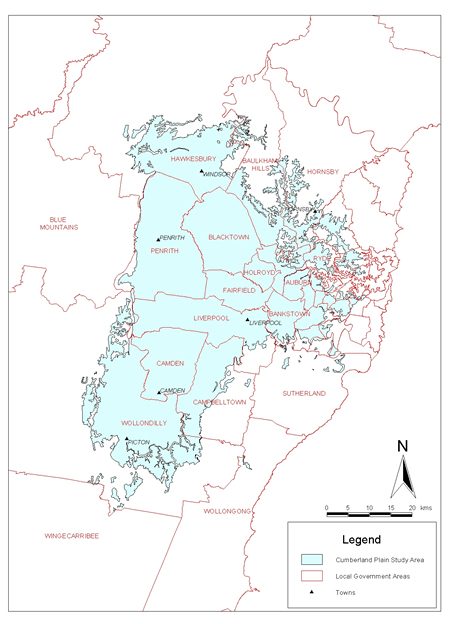
The formation of the Sydney basin is a very interesting process, reported to date back 200 to 300 million years. A very good account and description can be found in books such as Taken for Granted: The Bushland of Sydney and Its Suburbs(Benson and Howell, 1990) as well as A Day in the Bush (Higgins and Rodd, 2011).
In a very general nutshell – the landscape was incredibly different at that time in the Carboniferous/Permian period. Australia was part of Gondwana – a supercontinent where the lands of Antarctica, New Zealand, South Africa, South America, and India were all joined together. (Amazingly, South America was not joined to North America at this time!). The vegetation of Sydney consisted of some low-lying tropical swamps. At this time, large amounts of sediment (very large amounts) began to flow along massive river valleys out of Antarctica, with geologists and palaeontologists suggesting that Planet Earth experienced very intense and long-term rainfall and floods frequently over millions of years. (This is somewhat referred to in the very good and recent documentary Earth, which was shown on the ABC earlier this year). The Narrabeen series of sediments were deposited first, and then large amounts of more sand, silt, and clay flowed into a massive river delta in the Sydney area. The middle sediments comprised the iconic Hawkesbury Sandstone. The finer silt and clay sediments were filtered into the upper layer and formed on higher ground on the Cumberland Plain – known as the Wianamatta Group sediments. The buried swamps were turned into coal, some of which has been extracted from Balmain and Helensburgh, as well as the Illawarra.
The Cumberland Plain is described as a lop-sided basin that sits on top of the sandstone. A relevant link can be made when, around 1788, early colonists (invaders) tried to grow crops on the infertile sandstone at Farm Cove. It was not until more fertile soils were discovered in western Sydney, on the Cumberland Plain, that a genuine chance at successful farming was found. Agriculture was quickly established in the areas of Liverpool and Parramatta.
The vegetation of the Cumberland Plain is diverse as it comprises several soil types along with micro-topography changes and altering natures of drainage and aspect. It is likely, not surprising to learn that much of its original vegetation has been cleared to make way for urban development and expansion. Hence, all known and defined vegetation ecosystems on the Cumberland Plain are now threatened with extinction. These are now classed as threatened ecological communities (TECs) – more commonly referred to by ecologists and governments as endangered ecological communities (EECs).
There are freely available geology and soil landscape mapping that can be downloaded to understand the extent of the soil deposits of the Cumberland Plain. A Penrith Geological Map sheet can be interacted with here and a jpeg downloaded here. The extent of Hawkesbury Sandstone (map unit Rh), Bringelly Shale (Rwb), Ashfield Shale (Rwa) and Quaternary Alluvium (Qa) can all be analysed. Quaternary alluvium is mainly mapped along the river plains and creek lines.
Soil landscape mapping can be looked up now on NSW ESpade. Soil landscapes of NSW are definitive soil composition descriptions and profiles published by NSW soil scientists and complement the soils derived from these sandstones and shales (e.g., the Blacktown soil landscape and Hawkesbury Soil Landscape).
The Cumberland Plain is most associated with Cumberland Plain Woodland – a critically endangered ecological community of which an estimate of only 8% of the original extent remains. Cumberland Plain Woodland is a dry woodland to forest vegetation, existing mostly on clays derived from Bringelly Shale. The main trees are Eucalyptus moluccana (Grey Box), E. tereticornis (Forest Red Gum), and E. crebra (Narrow-leaved Ironbark). Bursaria spinosa (Blackthorn) can dominate the mid-storey in some patches, and there is often a grassy-forb ground layer. Some very good stands of CPW can be found at Mt Annan Botanic Gardens, as well as Scheyville National Park and Lansdowne Reserve in the Bankstown LGA.
The Cumberland Plain, however, contains much more, and a freely downloadable Recovery Plan can be found here (NSW DECCW, 2011). In this document, another eight EECs are accounted for: Agnes Banks Woodland, Castlereagh Swamp Woodland, Cooks River Castlereagh Ironbark Forest, Moist Shale Woodland, River-flat Eucalypt Forest on Coastal Floodplains, Shale Gravel Transition Forest, Shale Sandstone Transition Forest, and Western Sydney Dry Rainforest. These occur over specific areas of the Cumberland Plain and are associated with different eco-tonal and edaphic characteristics. Agnes Banks Woodland occurs solely at Agnes Banks, on a more recent aeolian sand deposit. Cooks River Castlereagh Ironbark Forest and Shale Gravel Transition Forest occur on alluvial gravels with varying degrees of clay influence. Castlereagh Scribbly Gum Woodland occurs on more sandy alluvium and has many species of Hawkesbury Sandstone woodlands. Western Sydney Dry Rainforest occurs in steep, moist, and sheltered gullies, mostly close to Cumberland Plain Woodland, and contains some rainforest mid-storey and ground layer species, often under a eucalypt canopy. River-flat Eucalypt Forest on Coastal Floodplains can constitute a beautiful forest, usually on broad creek lines and floodplains. There are some beautiful stands at Milperra off Henry Lawson Drive.
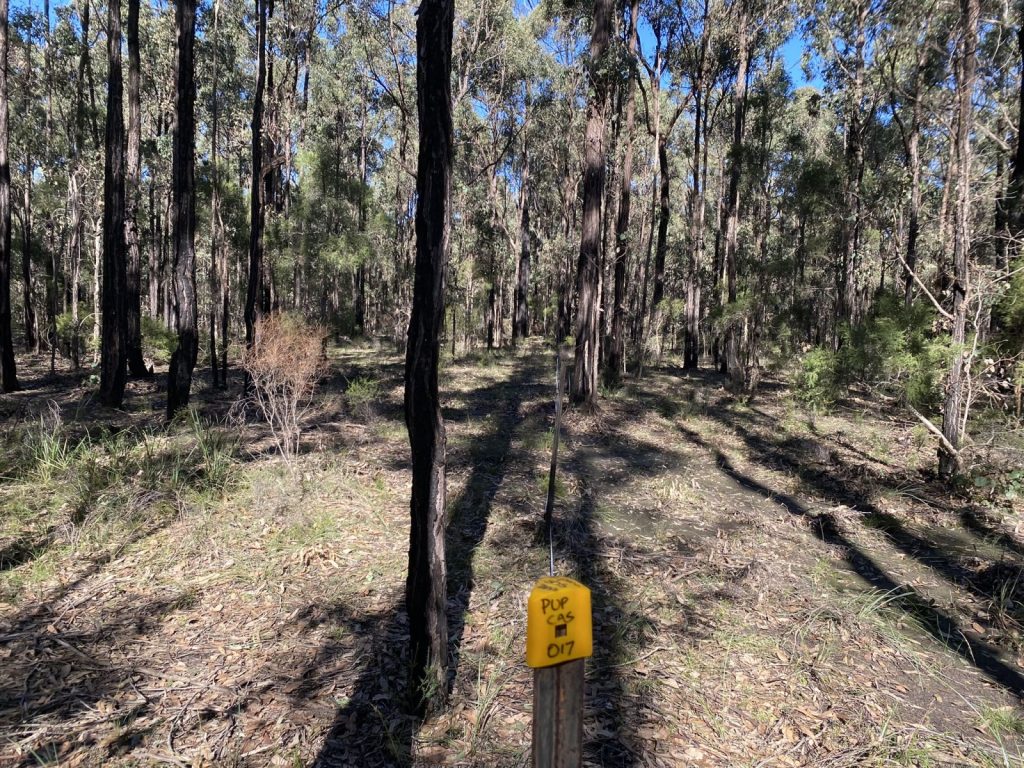
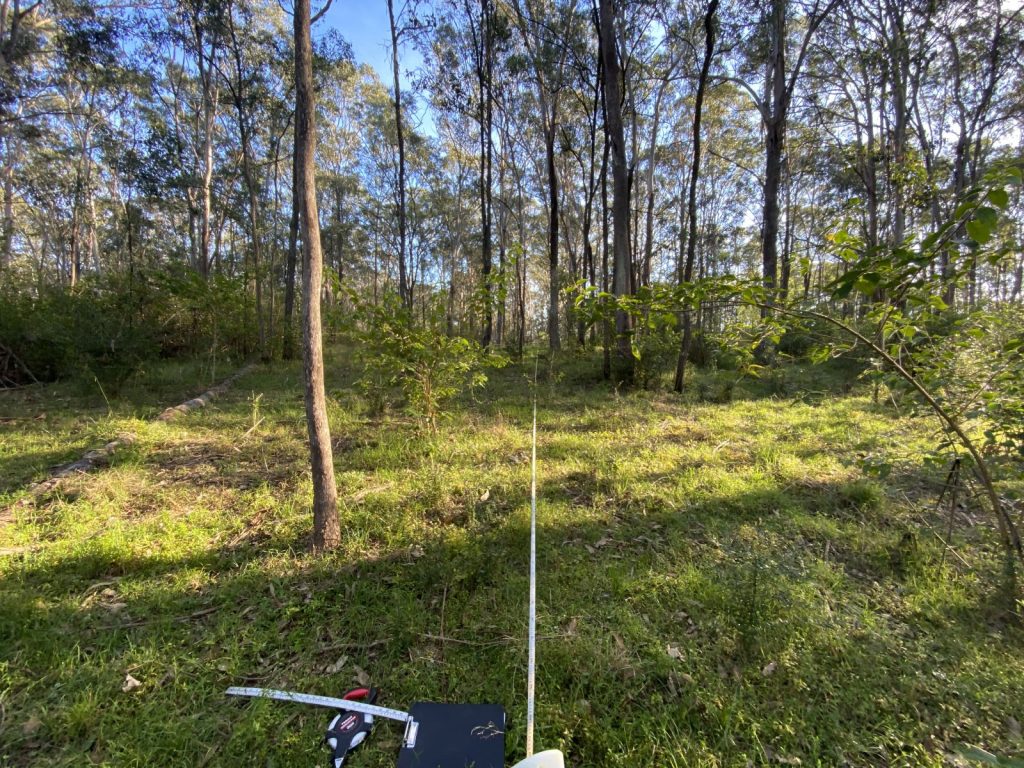
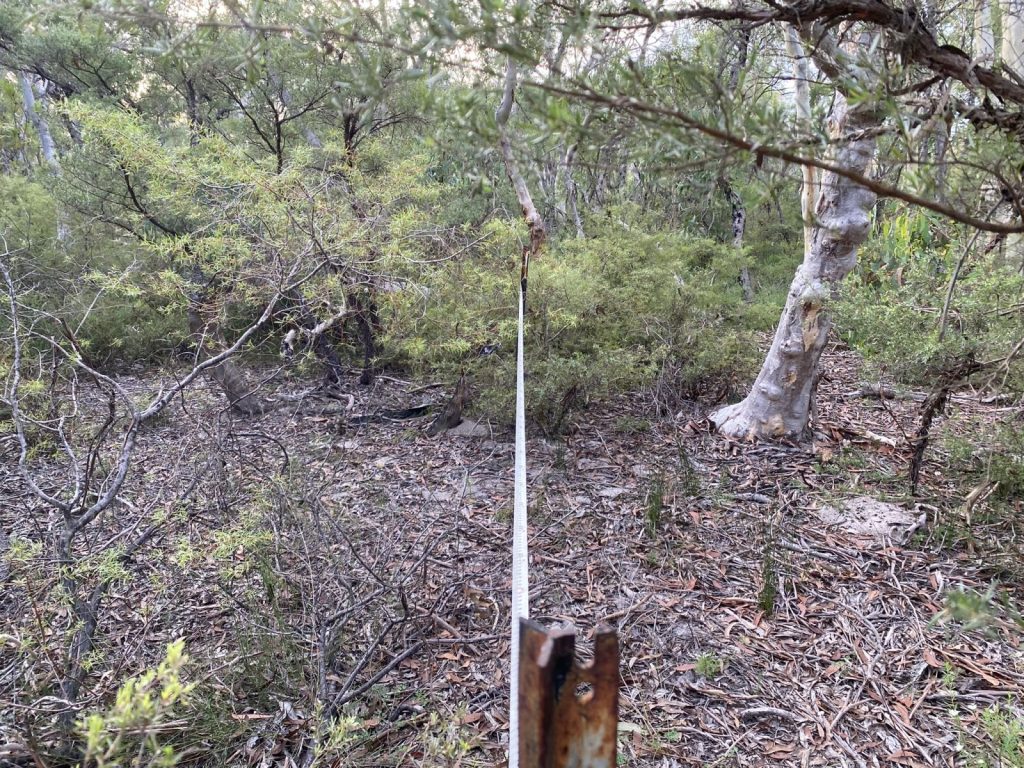
Additional EECs can be included, such as the Elderslie Banksia Scrub Forest at Elderslie and Spring Farm. I monitor this vegetation every year, which comprises only about 10 to 15 hectares remaining. Again, the soil is a more recent sand deposit, supporting species such as Banksia integrifolia (Coast Banksia) and Eucalyptus botryoides (Bangalay). Some areas adjoin Cumberland Plain Woodland linked to a dramatic change in soil texture.
A slide is shown in the recorded presentation listing the EECs that Local Government recognizes as occurring in the Parramatta and Hills LGAs.
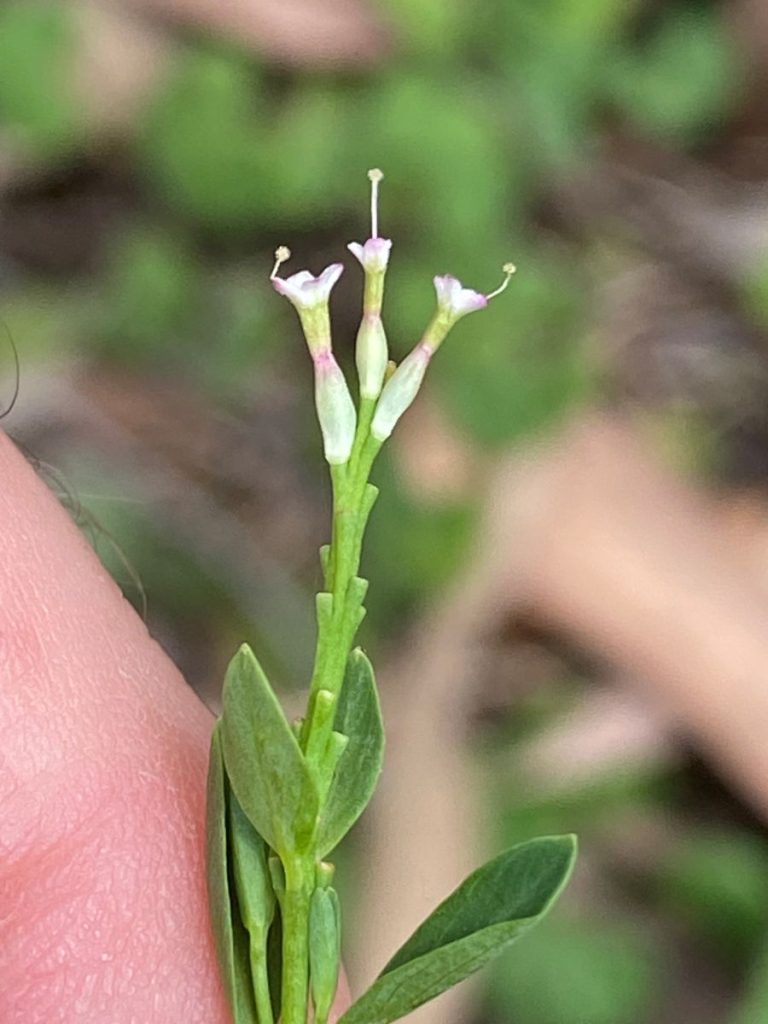
From this, I moved on to threatened flora species that are well-known in the greater Sydney area, with a focus on those that are found on the Cumberland Plain. A list of usual suspects (but not totally comprehensive) includes the following: Pimelea spicata, Wilsonia backhousei, Tetratheca glandulosa, Epacris purpurascens var. purpurascens, Dillwynia tenuifolia, Acacia pubescens, Pultenaea parviflora, Persoonia nutans, Hibbertia spanantha, Hibbertia superans, Hibbertia fumana, Hibbertia puberula subsp. glabrescens, Pomaderris brunnea, Grevillea parviflora subsp. parviflora + supplicans, Micromyrtus minutiflora, Micromyrtus blakelyi, Leucopogon exolasius, Leucopogon fletcheri subsp. fletcheri, Pultenaea pedunculata, Acacia bynoeana, Grevillea juniperina subsp. juniperina, Eucalyptus cryptica, Lasiopetalum joyceae, Callistemon linearifolius, Eucalyptus camfieldii, Pterostylis saxicola, Marsdenia viridiflora (endangered population in some LGAs).
Some of these are not strictly Cumberland Plain species but will be found on the shale/sandstone fringes, in some areas.
I then showed some well-known threatened flora that call Cumberland Plain Woodland home, and these include Pimelea spicata and Acacia pubescens (Downy Wattle). There at least used to be a very strong stand of Pimelea spicata at Lansdown Reserve. However, a recent visit revealed to me that there was hardly any of it left.
I gave some coverage to the South Maroota area, a location near Wisemans Ferry, in the Hills LGA, which lies just off the Cumberland Plain and back on the Hawkesbury Sandstone country. I managed a site here for about 6 years under a vegetation management plan. This location is known as a threatened species hot spot and about 10 threatened flora species had been recorded on this site and the surrounding road verges since 2000. I found six of them and profiled Grevillea parviflora subsp. supplicans, Persoonia hirsuta, Kunzea rupestris and Micromyrtus blakelyi.
.
During the NSW Saving our Species Program, I have monitored several flora species on the Cumberland Plain, including within some very important conservation reserves. The main area is that of Cranebrook, just north of Penrith, where Castlereagh and Wianamatta Nature Reserves are located. Nearby are also Windsor Downs and Agnes Banks Nature Reserves. These reserves are not really strongholds for Cumberland Plain Woodland but are for the EECs of Cooks River Castlereagh Ironbark Forest, Castlereagh Scribbly Gum Woodland, Agnes Banks Woodland and Castlereagh Swamp Woodland. It could be argued that these EECs have much less extent compared to that of CPW and are harder to find within the greater Sydney area. It is estimated that the original extents of these EECs, were never as large as that of CPW.
Nevertheless, a large suite of threatened flora species occur within these reserves. Since 2021, I have undertaken some intensive monitoring of Pultenaea parviflora (Sydney Bush-pea) – which mostly occurs in the Richmond-Penrith-Badgerys Creek area. This species has come up in very large numbers in Wianamatta and Castlereagh Nature Reserves since a large wildfire about 7 years ago. The aim of the monitoring was to sample plant numbers, longevity, health and seed production.
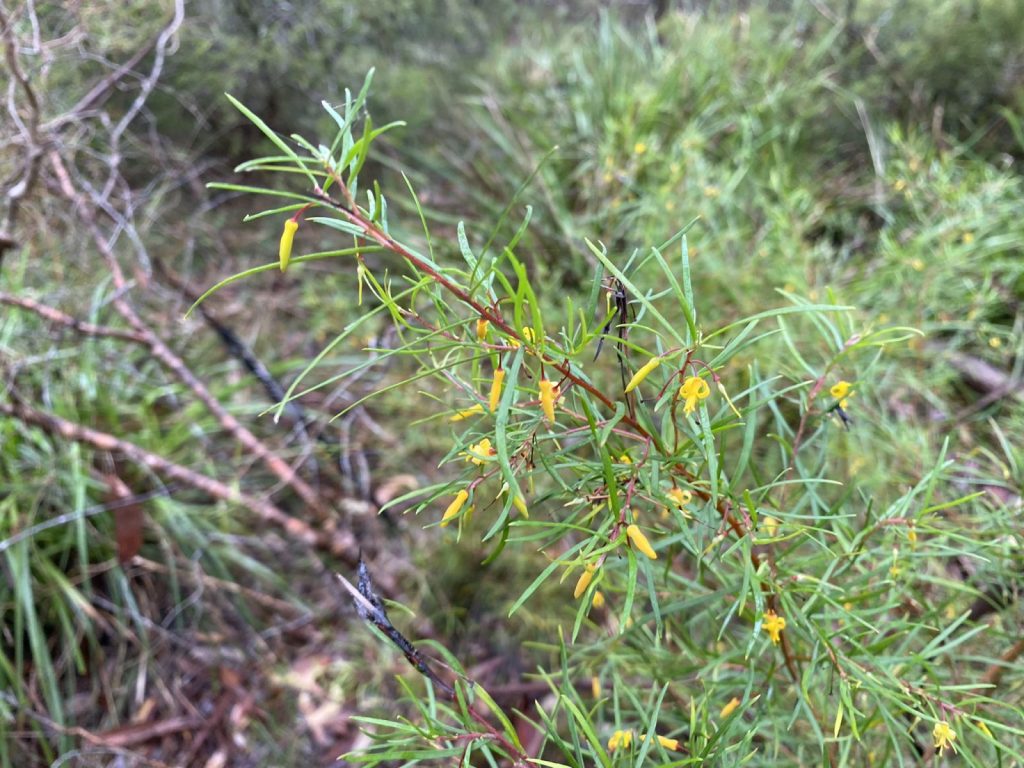
Growing alongside Pultenaea parviflora are Dillwynia tenuifolia and Grevillea juniperina subsp. juniperina. These were not monitored per se but were observed to be in large numbers also in these reserves. These two taxa are also predominantly Western Sydney species. Another species, with an even more restricted range here is Micromyrtus minutiflora. I also monitored this species to gauge its response and longevity after fire. This species is only found within an approximate 15 x 15 km area of Western Sydney.
The last species I covered, is one that many ecologists have worked on and that is Persoonia nutans (Nodding Geebung). It has prominent red stems and solitary persoonia flowers, with green leaves very narrow and about 5 cm long. It is well-known in areas such as Londonderry. I have also seen plants at Voyager Point and East Hills.
Plants of Persoonia nutans were monitored at Agnes Banks Nature Reserve as well as Castlereagh, Wianamatta and Windsor Downs. At Windsor Downs, plants have been planted as part of the Saving our Species program. I was thrilled to see that planted plants appeared to be flowering heavily and thriving. The most plants were observed at Agnes Banks Nature Reserve where plants grow on a sandy deposit with scribbly gum and species such as Bankia aemula.
I encouraged members to get out and visit these reserves. They are open to walkers and bicycle riders through the year. A sunny late-winters days is the best time to visit.
The Cumberland Plain remains a very interesting floristic entity and adds much to our Sydney flora. These vast areas of western Sydney have a need for habitat preservation with conservation of ecosystems crucial for the quality of human existence here. The biodiversity of ecosystems here remains a focal point for study and research for many ecologists, academics and students, and also provides much for environmental restorers and regenerators.
